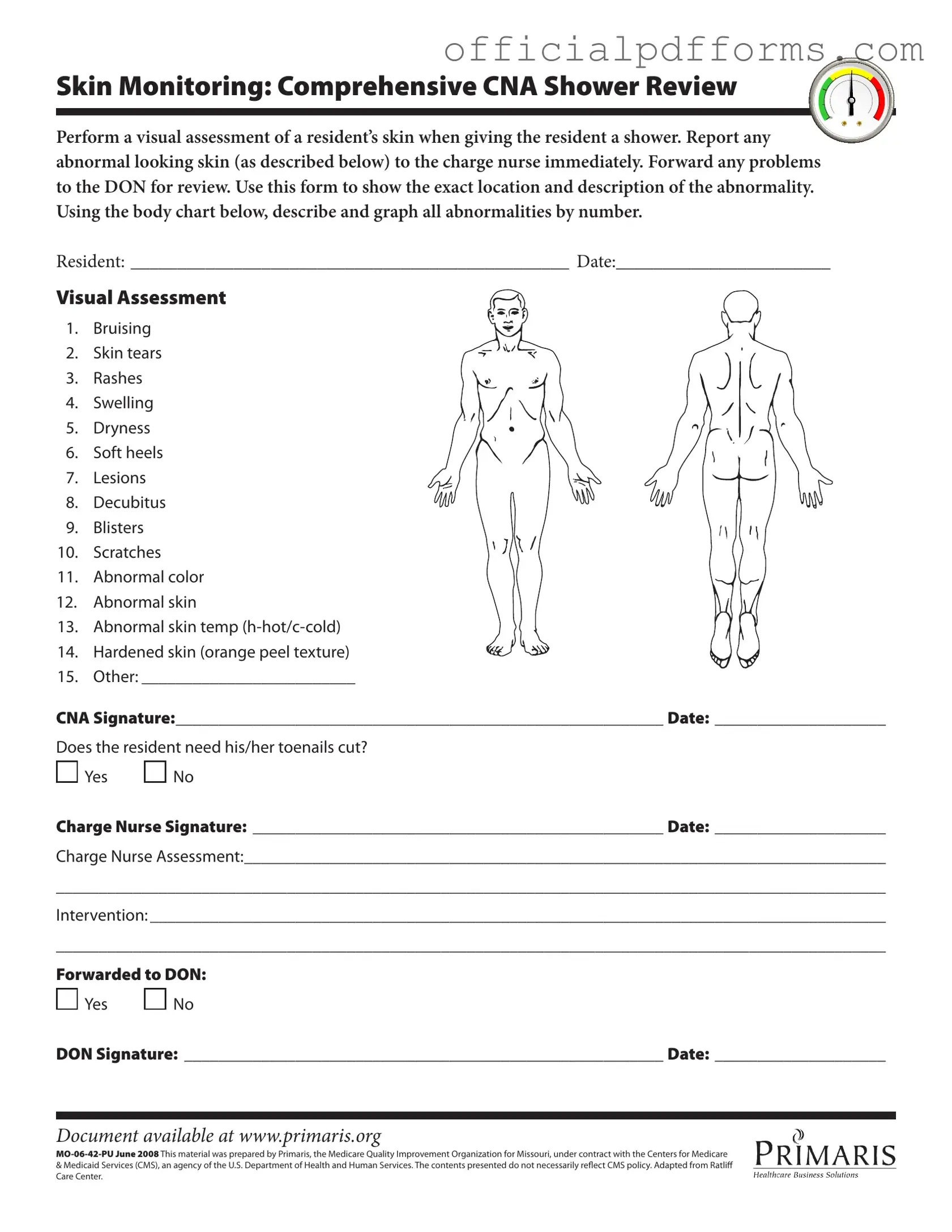The CNA Shower Sheets form is designed to assist certified nursing assistants (CNAs) in performing a thorough visual assessment of a resident's skin during showering. It serves as a documentation tool to report any abnormalities, ensuring that issues are communicated to the charge nurse and, if necessary, the Director of Nursing (DON). By using this form, CNAs can accurately record the location and description of any skin problems, which is crucial for the resident's ongoing care.
What types of skin abnormalities should be monitored?
During the shower assessment, CNAs should be vigilant for various skin abnormalities, including:
-
Bruising
-
Skin tears
-
Rashes
-
Swelling
-
Dryness
-
Soft heels
-
Lesions
-
Decubitus (pressure ulcers)
-
Blisters
-
Scratches
-
Abnormal color
-
Abnormal skin texture or temperature
-
Hardened skin (orange peel texture)
-
Other abnormalities as noted
Each of these conditions should be documented on the form to ensure proper follow-up care.
What should a CNA do if they notice an abnormality?
If a CNA observes any abnormal skin condition during the shower, they must report it to the charge nurse immediately. The charge nurse will then assess the situation and determine the appropriate intervention. It is essential for the CNA to document their findings on the form, including the specific location and nature of the abnormality, to facilitate further evaluation and care.
Yes, the CNA Shower Sheets form includes a section to indicate whether the resident needs their toenails cut. This is an important aspect of personal care that can affect the resident's overall health and comfort. The CNA should check "Yes" or "No" based on their assessment during the shower.
Once the CNA completes the form, it serves as a record of the skin assessment and any necessary interventions. The charge nurse reviews the form and may provide additional assessments or recommendations. If any issues are identified, the form is forwarded to the DON for further review. This process ensures that all skin abnormalities are addressed promptly and that the resident receives appropriate care.
